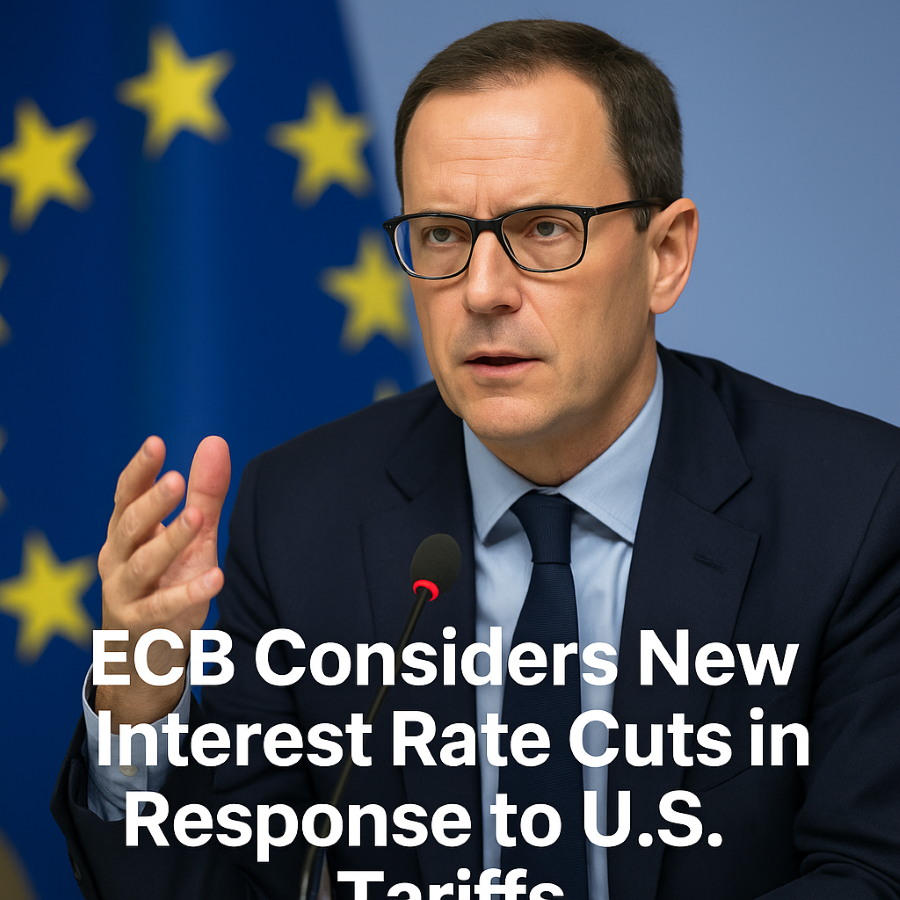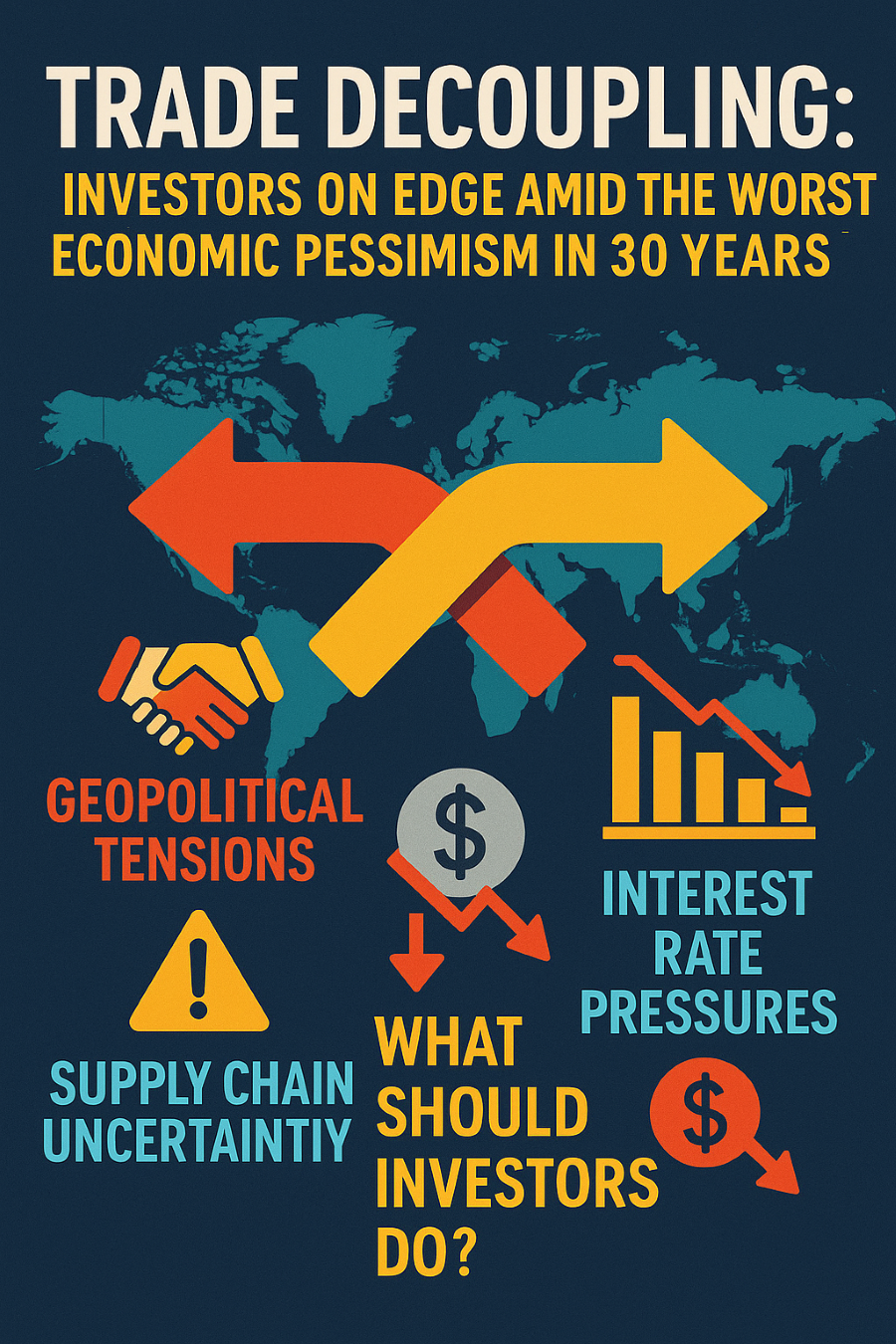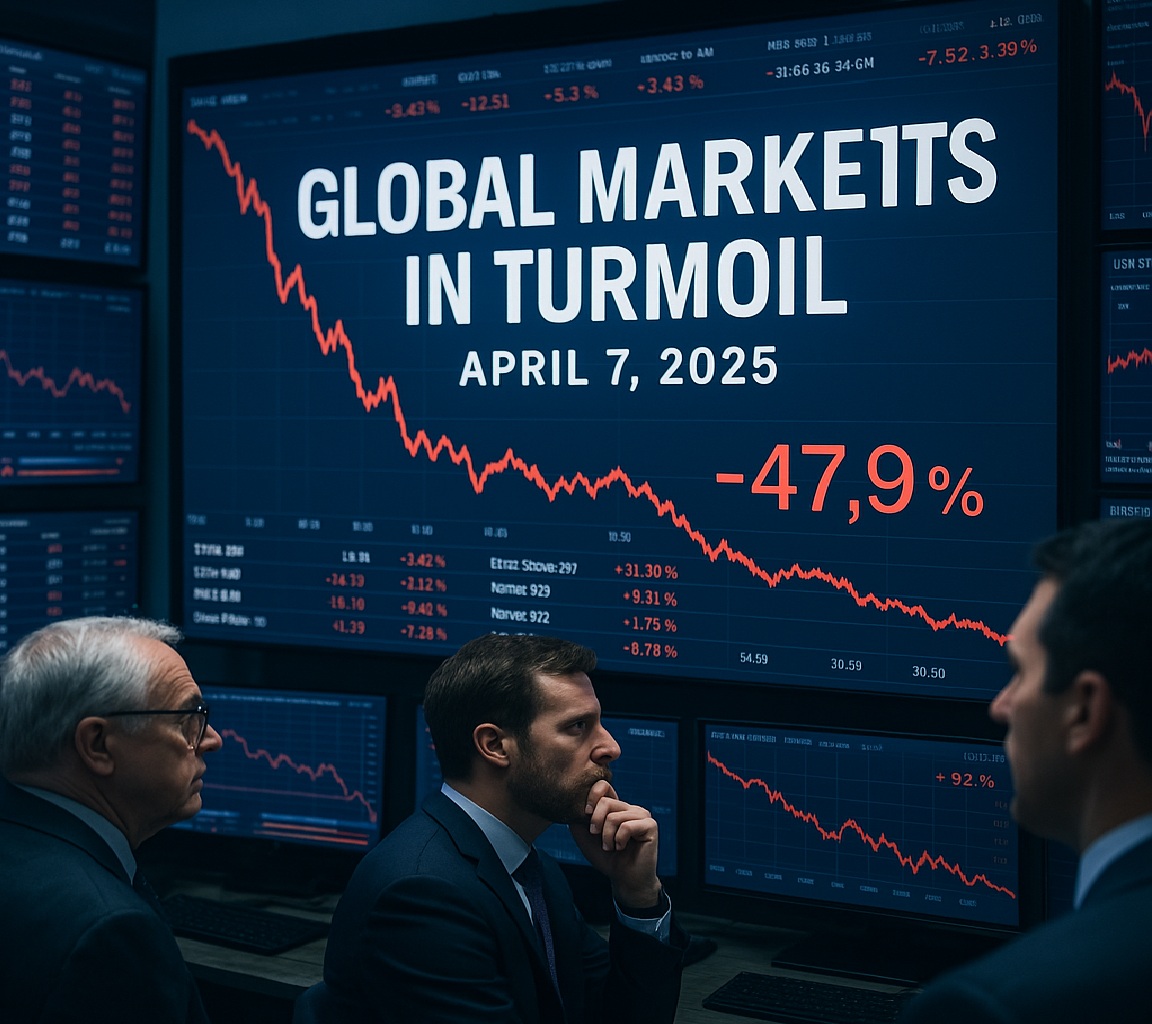Overview: A Day of Sharp Declines
On April 7, 2025, global financial markets experienced a dramatic downturn. Investor sentiment was shaken by escalating U.S. tariff policies under President Donald Trump, triggering widespread fears of a global trade war and economic recession.
U.S. Stock Market Performance
- S&P 500 dropped 3.3%
- Dow Jones fell by nearly 1,100 points
- Nasdaq declined 4%, pushing the Nasdaq 100 into a bear market
These sharp moves reflected investor anxiety over uncertain economic policies and weakening global demand.
Asian Markets Hit Hard
- Hang Seng (Hong Kong) plunged 13.22%, its steepest drop in 22 years
- Nikkei 225 (Japan) lost 7%, following a 9% fall the previous week
These markets were particularly sensitive to trade disruptions and weakening exports.
European Markets Follow the Trend
- FTSE 100 (UK) dropped 3.84%, totaling nearly 10% loss for the week
European stocks reflected broader concerns over trade, inflation, and reduced demand from international partners.
What Triggered the Crisis?
U.S. Tariff Announcements
The U.S. administration introduced comprehensive tariffs, sparking fears of disrupted global trade flows and rising consumer costs.
Retaliation from Trade Partners
- China imposed 34% tariffs on U.S. goods
- Germany and Japan issued strong diplomatic responses and signaled potential economic countermeasures
Other Market Impacts
Oil Prices
- Crude oil prices fell below $60 per barrel—a first since 2021
Cryptocurrency Drop
- Bitcoin dropped to around $76,500, impacting crypto-related stocks
Economic Outlook
According to Goldman Sachs:
- U.S. GDP growth forecast was lowered to 0.5% for Q4 2025
- Recession probability increased from 35% to 45%
Key Takeaway for Investors
In times of volatility, diversification and risk management become crucial. It’s essential to monitor global developments and adopt strategies that protect your capital against systemic shocks.




